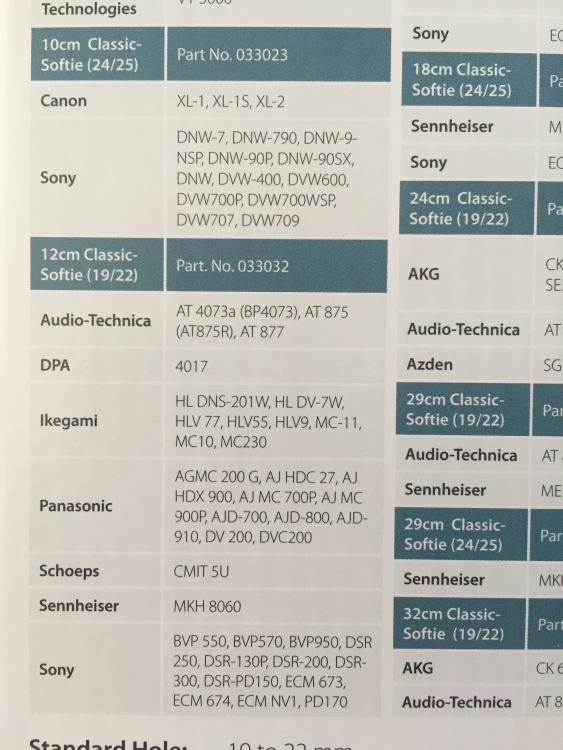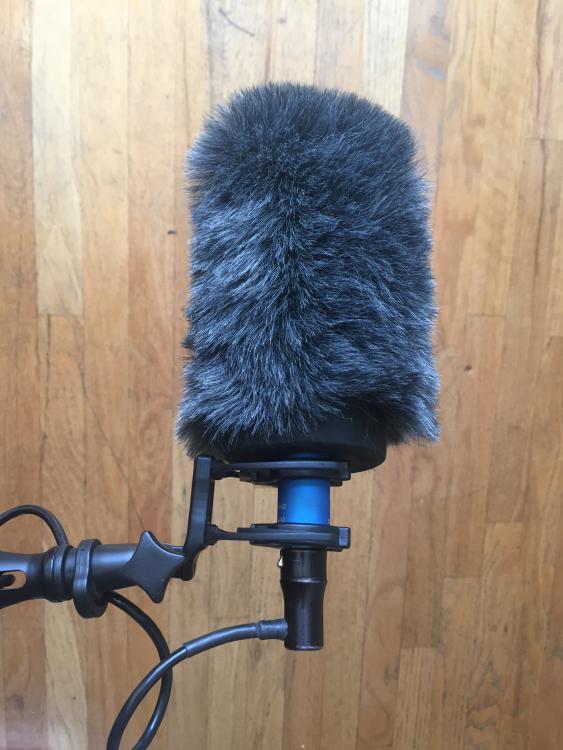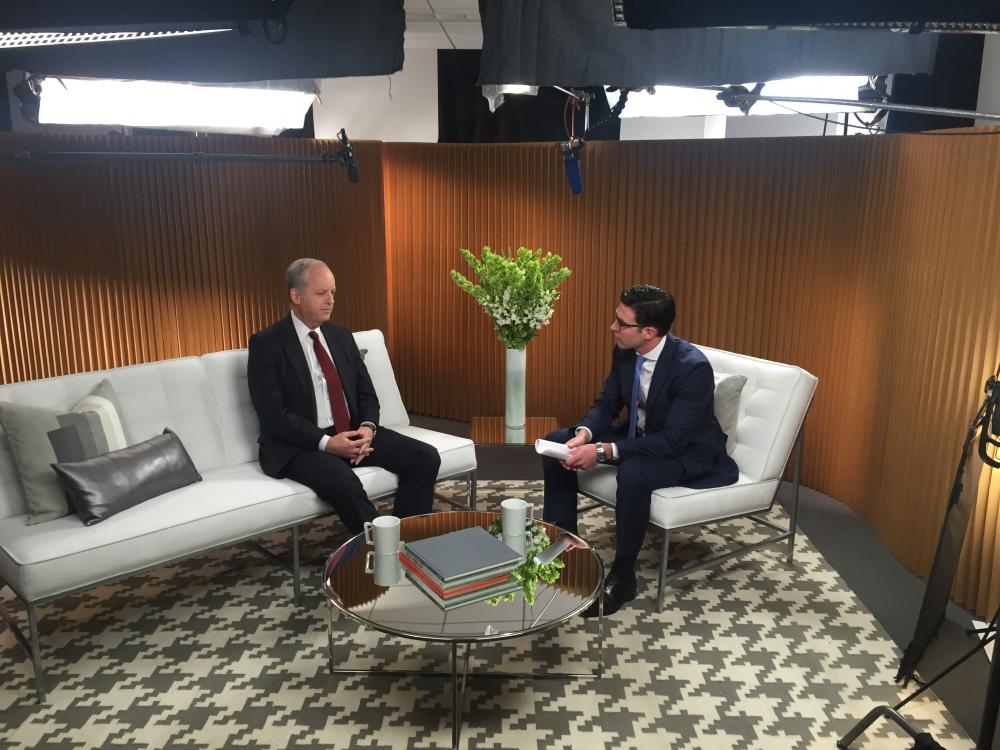-
Posts
687 -
Joined
-
Last visited
-
Days Won
2
Content Type
Forums
Gallery
Store
Everything posted by Jesse Flaitz
-
Yes, Ron spent about 20 minutes on the phone with me. He was immensely helpful. Didn't resolve the issue exactly, but he educated me quite a bit on RF signal flow, gain staging etc. I think the problem I had comes down to my mismanagement of equipment. I had assumed going into an RF heavy environment I'd want the most powerful transmitters and receivers to get above the noise, but that's not how it works because physics and stuff. More power can be a solution in high RF environments, but so can less power on a clear frequency. RF issues are by far the most conceptually difficult aspect of sound mixing for me, but I think this episode helped shed a bit of light on it. Thanks for all the help. I'm going to do another A/B/C test another day when I have time. I want see what happens when I get both the RF multi and dipoles out of the bag a bit. On my cart set up, both are out of the bag by default, but I've never done a test against reception.
-
The PSC RF Multi has power to active antennas, but that's off for my passive LP620s and the dipoles. This is a good question I'd like some clarification on. This RF issue is basically just a signal to noise issue is it not? In a high RF environment, if I'm amplifying my reception broad band in order to target a specific frequency on which I'm transmitting, does that also just raise the RF noise around the signal as well? Essentially overloading the receiver with RF so it can't isolate a target frequency. But that can't be the whole story because part of the reason to use the larger antennas and a wireless distro is to navigate heavy RF environments (or just for range in regular RF environments). No, main power only, I don't use the antenna power on my LP620s or the dipoles.
-
I have not done this, I don't have sna terminators, but I wouldn't have thought of that as thing. I'll look into it. I did not have the shark fins on site to test. I tested them with the same cables at my apartment and got noticeably less RF spray on the scans (you can see in the pics, I took one with shark fins attached). The issue is present on both units, but noticeably more so on the SRc (I have also noticed the performance difference, SRb does seem superior but that's just my experience). Yes same cables for both antennas. I did not test with the SNAs away from the bag, but if that's a solution it sort of defeats the purpose of using the SNA in a bag set up. I've seen a few other mixers with SNA dipole rigs in the bag, I'm not sure how they do it different. Thank you for the reply Larry. In the tests I just did in my apartment I tested reception with the shark fins basically in the bag like the dipoles were, just sitting in a side pouch. The RF multi I'm referring to is this PSC RF Multi: https://www.bhphotovideo.com/c/product/842473-REG/psc_fpsc0006c_psc_rf_multi.html?ap=y&gclid=CjwKCAjwwdTbBRAIEiwAYQf_E_1S_jEFWqlm_9-uDjgKZKk2ZRhf1R3kX6pTybfXDSRRuOgT9ZHcNBoCqLoQAvD_BwE&smp=y This is an interesting explanation, but I'm sure many other people have used dipoles with the RF Multi. I know several mixers who use it in a bag in conjunction with the mixplexer which is, I assume, more or less doing the same thing as the RF multi (where the narrow band oscillation might be a problem). Not me, I only smoke the good stuff
-
I've been having some frustrating RF issues recently. I picked up a couple SNA600s to use in a bag set up. Running Nomad 10 and SRb/SRc RX in the bag going through an RF multi to the SNAs. The performance has been underwhelming to say the least (I should note that my Lectro LP 620 shark fins work great in this set up). Here's a link to the PSC RF multi for those that don't know it: https://www.bhphotovideo.com/c/product/842473-REG/psc_fpsc0006c_psc_rf_multi.html?ap=y&gclid=CjwKCAjwwdTbBRAIEiwAYQf_E_1S_jEFWqlm_9-uDjgKZKk2ZRhf1R3kX6pTybfXDSRRuOgT9ZHcNBoCqLoQAvD_BwE&smp=y I have the SNAs set to ~540Mhz length running block 19/21 TX. SMQV/SMv TX set to 100mw. Receivers, Nomad and RF multi all running off the same BDS. This week I was in a high RF environment (16 wireless on talent, camera hops and 4-5 house wireless) and I figured the RF multi/dipole set up would help me out a lot. It didn't help at all and became a liability very quick so I switched back to whips and everything was fine. I was getting full RF strength drop outs regularly. The RX would read full reception, but audio would glitch and drop out in a bad way. I was getting almost full black out on scans that would clear up instantly if I switched back to whips. I have a second BDS system so I powered the RF-Multi from a separate source to try and isolate a grounding issue (but again, the shark fins don't have this problem), but it didn't make a difference in the scans at least. My assumption is user error, but there isn't much to error about in that RF signal chain. Any help would be appreciated. I attached several scans with info about them (these pics are in my apartment, not from the job this week). The scans aren't nearly as bad as on the job (Flatiron district in Manhattan), but show clear amplification of RF noise in the environment. I'm again getting a weird 200 Error trying to upload pictures here. No idea why, here is an imgur album with notes showing the different RF read outs: https://imgur.com/a/r83CfFQ Thanks for any ideas. Jesse
-

red one Audio cables for 1st Generation RED ONE
Jesse Flaitz replied to IronFilm's topic in Cameras... love them, hate them
Haha, yes. -
OS - Windows 10 64 DAW - Reaper interface - Mix Pre 6 This is not a real review, I don't do post audio professionally, and will only use the Mix Pre for 1-2 input recordings. I haven't seen much of a discussion about the Mix Pre as an interface so figured I'd start one here to see what other people thought. I bought a Mix-Pre 6 a couple months ago to use as a back-up field recorder/small gear package for simple interview/small budget stuff when the full Nomad bag isn't necessary. I haven't used it for that purpose more than a few times, so I connected it to my PC and decided to give it a go as an interface while I don't need it, replacing my ancient M-Box 3. I don't do post work any more, but I like to keep up some knowledge of the workflow/software/plug-in capabilities etc. I mainly used the interface to record myself, or maybe a musician friend or voice over artist who need a quick audition recording. I don't use it for extensive tracking, multi-track recording, or use it as a recorder, strictly and I/O device for my PC. For me, in that capacity, the Mix Pre 6 is excellent. It takes some setting up, but after an hour or so I got it working swimmingly. There are only a couple small issues I'd comment on: 1. The Input trim control is poorly designed. Touch screen control only, and 1dB increments each time you touch the up or down. I'd love if the trim/pan controls could be manipulated with the fader knob when selected. Not a real problem, just annoying as an end user. 2. I'd prefer the stereo output level was mapped to some fader as well. 3. A "mute stereo out" button would be awesome As is, having a double duty quality interface for my PC that I can quickly turn into an ultra light weight location recorder, is really incredible. Hats off to SD, at $900 I couldn't be happier with it.
-

NYC Help - Need some batteries and maybe a boom op!!
Jesse Flaitz replied to RPSharman's topic in General Discussion
NPs should be no problem taking on a plane as carry on, same with iPowers. Don't check them. TSA might give you a problem with carrying them on, but TSA is mostly dunce caps, so bring a print out of the FAA guidelines on lithium batteries. Assuming your TSA agent is capable of reading, you should be fine. -
I use iPowers 9v 520mah and usually get at least two full days on a charge in my Comteks.
-

So much illegal 700MHz wireless equipment on eBay
Jesse Flaitz replied to Tom Duffy's topic in General Discussion
XD, well... -

Johnny Knoxville gags and wires.
Jesse Flaitz replied to Alan Gerhardt's topic in General Discussion
Having spent a decade or so watching Knoxville and crew antics, I'd recommend confirming L&D policies with production. Equipment on those shows must get destroyed on the regular. IDK the availability of replacement transmitters/lavs in your area, but be prepared to to lose a lot of stuff to damage. -
Pluraleyes works great when other, better modes of sync aren't accounted for or available. I can't think of a single editor who wouldn't prefer, in addition to scratch audio for waveform sync, proper slating procedures and time code sync. Again, if production doesn't pay for/account for any type of proper syncing protocol, as long as there is some type of scratch audio they can make it work. Pluraleyes breaks down in a lot of situations however. Noisy locations where the audio waveform might vary significantly from your audio recorder and the camera mic nullify almost any advantage of waveform sync. Scratch audio from your mix to camera is the best way for Pluraleyes to work.
-
Haha, it always comes to this.
-
I have a "work with my equipment only" policy. It's been over three years since I worked a day without my own equipment (boom op days as an exception of course). The last time I worked with productions gear, they wouldn't pay me a labor rate for checkout so a PA picked it up. They sent all the wireless units without antennas... Never again. I've found that if I calmly explain that due to the careless use of rental house equipment I can not guarantee the functionality of said equipment, and therefore will not be responsible for it, it only makes sense for me to work with my equipment. Also, I paid tens of thousands of dollars for it, and it's about 1/3 of my total day rate, and I'm vastly more efficient working with it, etc.
-
I found the 12cm softie to be just a tiny bit too large. I ordered the 10cm Rycote softie and it fits perfectly. The 12cm is listed for the CMIT 5U, but the short body length of the mini makes it a less optimal fit. I tested the miniCMIT against my MKH 50 two days ago. I had to use much more gain on my Nomad 10 for the CMIT than the 50. I was sitting around +18 for the 50 and up to +25 for the CMIT (circle dolly wide shot, had much more headroom than I'd like). That was high enough gain to start getting slightly noticeable thermal noise. The people talking weren't exactly great at projecting their voices, but the room sounded good enough to carry the signal. The noise was likely more noticeable in the CMIT due to the pick up pattern. My 50 was picking up much more of the office AC noise that the CMIT was rejecting. It was minimal enough to not effect the tone when mixing between the two, but definitely noticeable when soloing back and forth. I really love the low profile nature of the mic and, of course, it sounds amazing (tiny noise floor issue notwithstanding, also something I've noticed with other hypers).
-
I like where their head is at but... yeah. Fail.
-
That is the noisiest noise floor this side of a zoom recorder. And at a $10,000 goal for an indiegogo campaign, there is no way they could manufacture something like that for less than 20x their goal at the very least. Also, part of what makes the Soundfield so great, is the post processing. The directionality was very limited when spinning that video around, whereas the Soundfield has a very pronounced ambisonic space.
-
Just ordered one from Gotham. Can't wait to use it in the field. I assume the softies that work for the 5U work for the mini? Gotham wasn't sure about it, but the interference length appears the same.
-
$100,000 camera package $3,000 for sound package Something doesn't make sense here. Try budgeting closer to $15,000 and you could put together a decent basic sound kit of two lavs, boom and mixer/recorder. I don't think you'll find too much assistance from this forum in building a "kind of good enough" kit.
-
There is no easy solution here. Waves are very difficult because they are broad spectrum and fluctuating. Some Izotope/de-noise work and automated eq will do something, but ADR is probably your best bet.
-
I see that somewhat frequently when I'm jamming Arris from my ERX. The warning will blink a couple times then go away. I'm wondering if it's the same reason that jamming my TS-C from my Nomad will occasionally show a SYNC ER 24, but still sync the timecode fine. Never had complaints from post about sync issues when it's happened.
-
I can't give a proper comparison, as I've not used the PSC. All I can say, is I'm extremely happy with the performance of my ALP 620s, and I find them well worth the price (which is still very reasonable IMO). Though I've yet to have them get run over by tanks, I have shot several of my SM series at them with a potato cannon and so far I've only damaged my reputation in the neighborhood ;).
-
This may be true in some sense, but if you change 744T to 633, there are a myriad of reasons to choose the 633 over an F4 (and F8 as well). While Zoom has clearly upped their game with the F8, the F4 not so much. Though if you read the comments, some people may disagree. No serious audio professional will use a Zoom in any capacity as their premier recording device. Long term it's just too limited. If all you do is single person talking head interviews, direct to camera in a studio for corporate work, maaaaaaybe you could get away with it I guess. But Sound Devices, Zaxcom, Sonosax, etc. are kings of the industry for a reason.
-
In the defense of dialogue holding up a final scene, I propse the Usual Suspects:
-
Hopefully never. Blackmagic has a sordid history of production issues, false promises, delayed releases, buggy products, illogical designs, etc. Though I will admit, their dual rack monitor system is a bargain for the ages. They might end up some kind of competition for the new and improved Zoom products or something, but I doubt much else.
-
I don't think I've ever seen a rack of Dorrough meters on a cart like that before. Very cool!

.png.279748a58a2b862b7aa5f3b84126e232.png)




